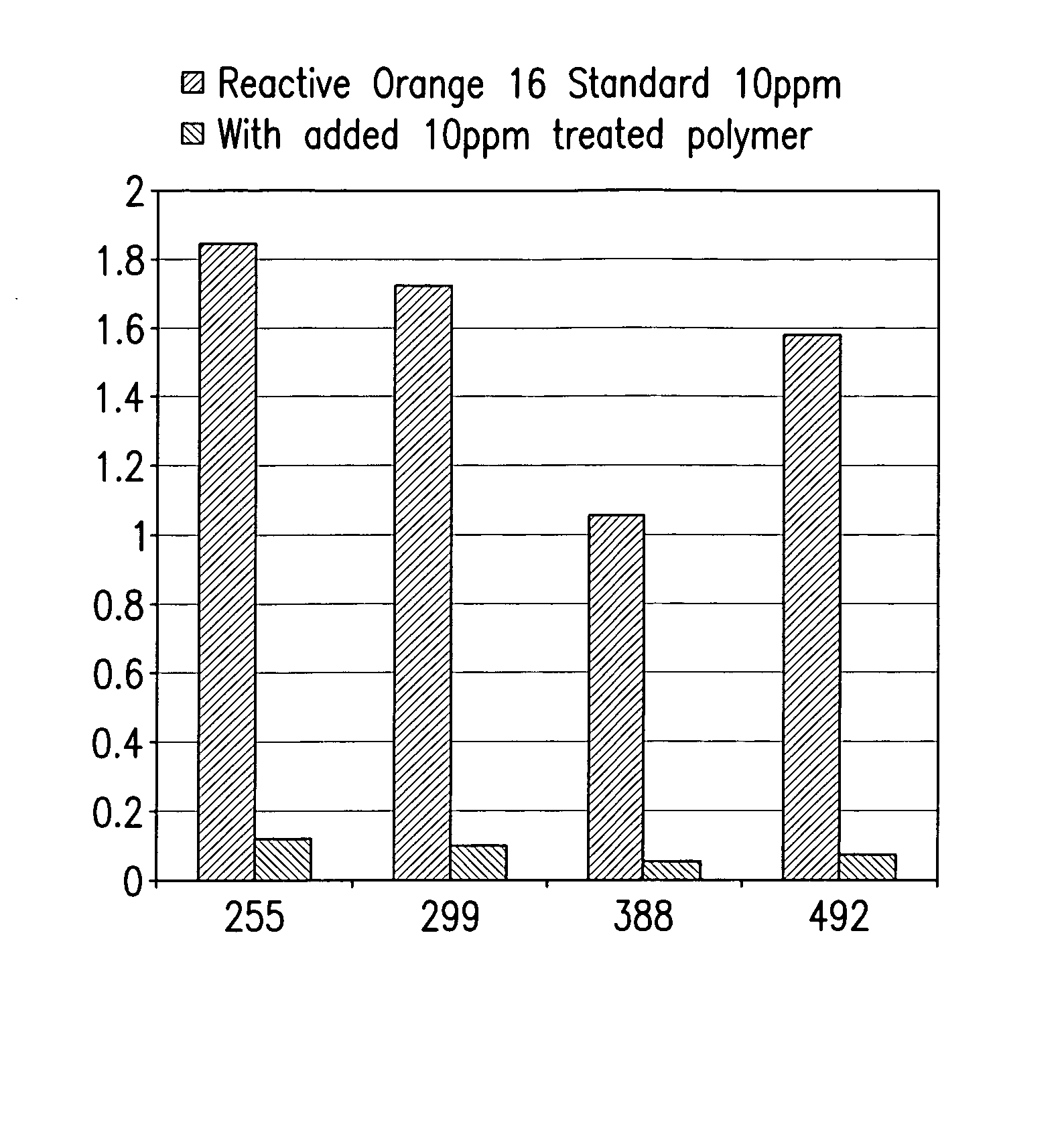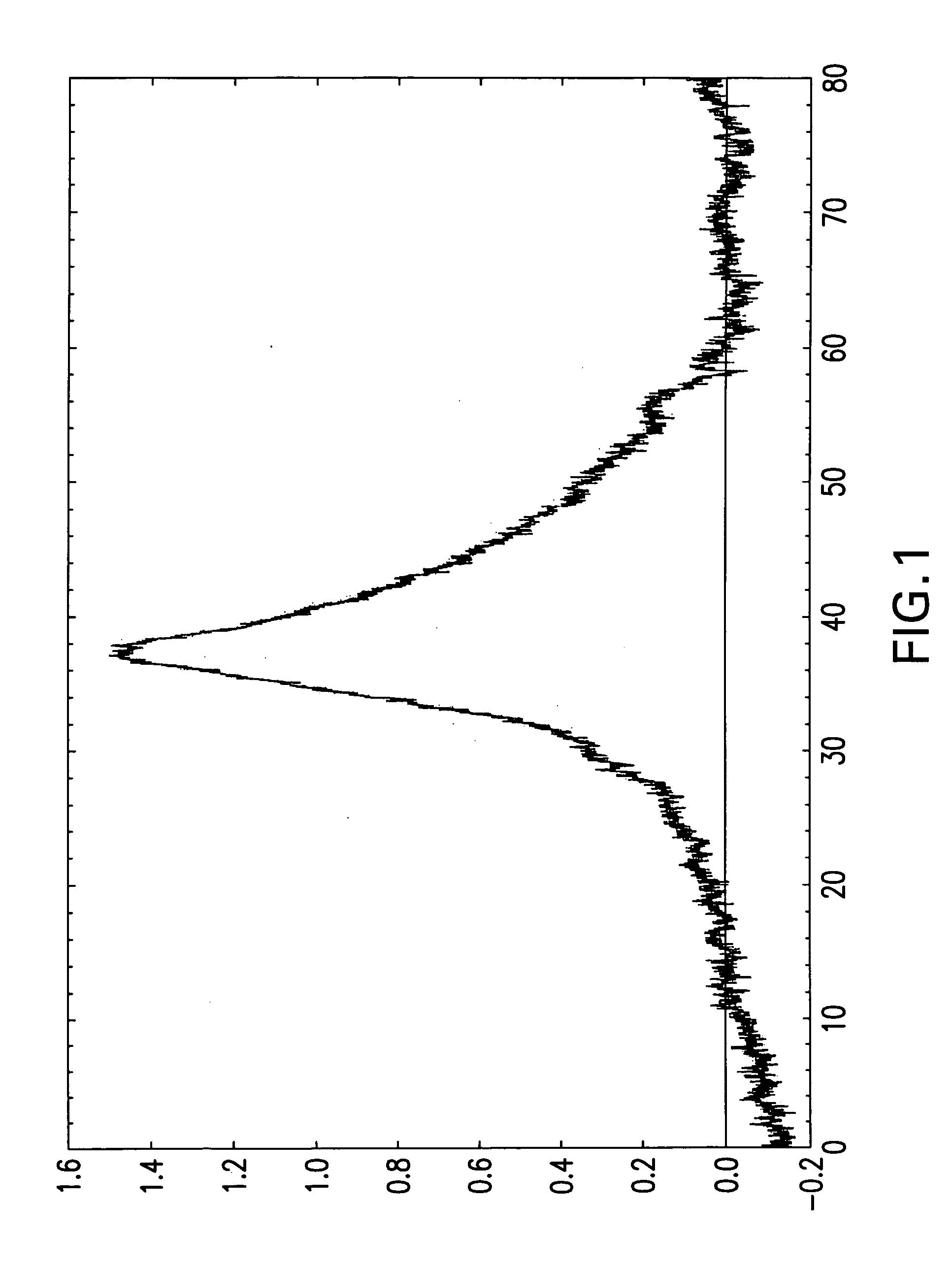Novel crosslinked polymeric substrates methods of preparation and end use applications of the substrates
a crosslinked polymeric substrate and crosslinked technology, applied in the field of crosslinked polymeric substrates methods of preparation and end use applications of the substrates, can solve the problem of the ultimate cost of cleaning methods
- Summary
- Abstract
- Description
- Claims
- Application Information
AI Technical Summary
Benefits of technology
Problems solved by technology
Method used
Image
Examples
example 1
Reaction in Ethanol and Water
[0114]Preparation of stock polymer solution (A) was carried out by adding 30 Kgms reagent grade ethanol to 0.90 Kg Lupasol WF with stirring to produce a homogeneous solution.
[0115]Nine Kgms of Sipernat 35 silica was charged to a reactor. Then, 50 Kgms of reagent grade ethanol were charged to the reactor slowly with stirring to aid dispersion. An additional charge of 50 Kgms of ethanol was charged to the slurry and the reaction mass was continually stirred while heating to 65° C. and the reactor was held at that temperature. There was then added 0.18 Kgms of deionized water and the stirring was continued for about 15 minutes. Toluene sulfonic acid, 45 gms, was added and the reaction mass allowed to stir for an additional 30 minutes while heating to 75° C. to drive off water from the reaction mass.
[0116]There was then slowly added 1.2 Kgms of 3-glycidoxypropyltrimethoxysilane to the reactor and the reaction mass was allowed to stir for an additional 30 mi...
example 2
[0119]Seven and ½ Kgms of Lupasol G500 (a 40% by weight polymer solution supplied in water) was added to a glass vessel and stirred to ensure a homogeneous solution.
[0120]Four Kgms of deionized grade water was added to a glass vessel and then 3.0 Kgms Lupasol WF was added and the mixture was stirred to produce a homogeneous solution. This was stock polymer solution (A).
[0121]One hundred Kgms of water was charged to a reactor while heating to 75° C. There was then charged 30 Kgms of SIPERNAT 350 silica with minimal stirring, enough to just avoid settling. The temperature was maintained at 75° C. There was then charged 5 Kgms of deionized water and 300 gms of acetic acid and the mixture was continually stirred for about 10 minutes at 75° C.
[0122]There was then slowly added 3.6 Kgms of silane (Z6040) to the reactor and the mixture was stirred for 10 minutes with the reactor held at 75° C. Thereafter there was added 100 gms of toluene sulfonic acid and the mixture was stirred for an add...
example 3
[0124]This example was the preparation of 10 weight % PEI on 250 micron precipitated silica. Materials included 5.0 Kgms of Rhodia Tixosil 68, 12 liters of deionized water, 50 ml of glacial acetic acid, 500 ml of Dynasylon GLYMO, 50 gms of toluene sulfonic acid, and a polymer stock solution (500 gms of Lupasol WF (PEI polymer) dissolved in 2 liters of deionized water using the following procedure.
[0125]The 12 liters of water was preheated to near boiling. Thereafter, the silica was weighed and added to the 20 liter reactor. Then, preheated water was added with stirring and the acetic acid was added. After 15 minutes, the GLYMO was added and then after 30 minutes, the toluene sulfonic acid was added. After 45 minutes, the PEI was added and after 2.5 hours, the material was drained into a 5 gallon carboy as a white slurry.
PUM
| Property | Measurement | Unit |
|---|---|---|
| molecular weight | aaaaa | aaaaa |
| temperature | aaaaa | aaaaa |
| weight percent | aaaaa | aaaaa |
Abstract
Description
Claims
Application Information
 Login to View More
Login to View More - R&D
- Intellectual Property
- Life Sciences
- Materials
- Tech Scout
- Unparalleled Data Quality
- Higher Quality Content
- 60% Fewer Hallucinations
Browse by: Latest US Patents, China's latest patents, Technical Efficacy Thesaurus, Application Domain, Technology Topic, Popular Technical Reports.
© 2025 PatSnap. All rights reserved.Legal|Privacy policy|Modern Slavery Act Transparency Statement|Sitemap|About US| Contact US: help@patsnap.com



